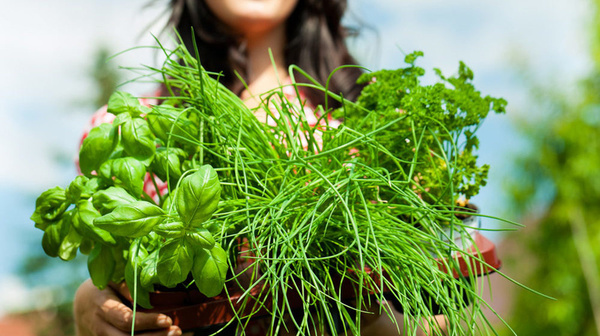
Your April Veggie & Herb Garden Tasks
Growing vegetables and herbs is as rewarding as the results are delicious, but good results require keeping up with the seasonal needs of your plants. This month, give your garden the care it needs to keep those fresh herbs and veggies coming.
There’s something special about growing your own vegetables and herbs. It’s not just about enjoying the taste of them at the very end, though that is certainly something to look forward to. Many homeowners with a vegetable garden receive great enjoyment from the whole process, including the planning, planting, caregiving, and harvesting.
This blog covers the basics of planting, watering, fertilizing, and pest control that should be done in your Florida vegetable garden this month.
What to Plant
Approaching hot weather means tropical vegetables can now be added to your garden. Southern peas, dasheen, malanga, Jerusalem artichoke, calabaza and chayote squash, okra, and sweet potato are a few that will withstand the summer heat.
Good summer herbs include dill, basil, oregano, thyme, chives, and sweet marjoram. Consider freezing or drying other herbs that won’t flourish in the heat.
Garden Care: Water and Fertilizing
Hot, dry conditions necessitate extra care. Our daily summer thunderstorms haven’t arrived yet, and sometimes we only get a good rainfall once a week. With that in mind, here are a few pointers:
- Dry soil is a killer. Check your sprinkler system to ensure it delivers the right amount of water at the scheduled time. Half-inch to 3/4-inch of delivery is a good amount per watering.
- Herbs and vegetables growing wide or tall consume more water than their short or narrow friends. Increase frequency of watering as appropriate to keep the big guys well hydrated.
- Container plants need to be checked every day. Bigger plants might need twice-daily watering.
- Keep mulch layers to a max depth of 3-4 inches. Any thicker and that precious water won’t penetrate to plant roots. If mulch has begun to decompose, throw a fresh layer on top.
Fertilizing appropriately stimulates growth and produces strong, healthy plants. Here are a few tips for your April feedings:
- Veggies planted in March will be ready for another fertilizer application now.
- Granular fertilizers should be scattered above a plant’s roots and kept away from its stems.
- Liquid fertilizers need to drench plants’ roots.
- After feeding, apply water to transfer nutrients into the ground.
- Apply fertilizers weekly to container gardens.
Pest Control
Insects and disease will be increasingly apparent as time goes on; you might have noticed a few bugs already. The most common afflictions are blight, leaf spots, and wilts.
Wilts are a result of fungus or bacteria that cause a plant to, well, wilt. They appear to be thirsty but continue declining even after being watered. Their prognosis isn’t good, and the only way to control wilts is by planting a resistant variety next time or replanting in another area (including in a container).
Blight is typically caused by bacteria or fungus. You’ll identify it by the spots that begin forming on lower leaves and gradually move up the plant. Fortunately, synthetic fungicide or one containing copper will usually do the trick. Apply as instructed on the label.
Slugs, snails, aphids, caterpillars, whiteflies, and other pests may be appearing, too. Soap or sprays, handpicking, and synthetic baits are a few control options depending on what’s in your garden.